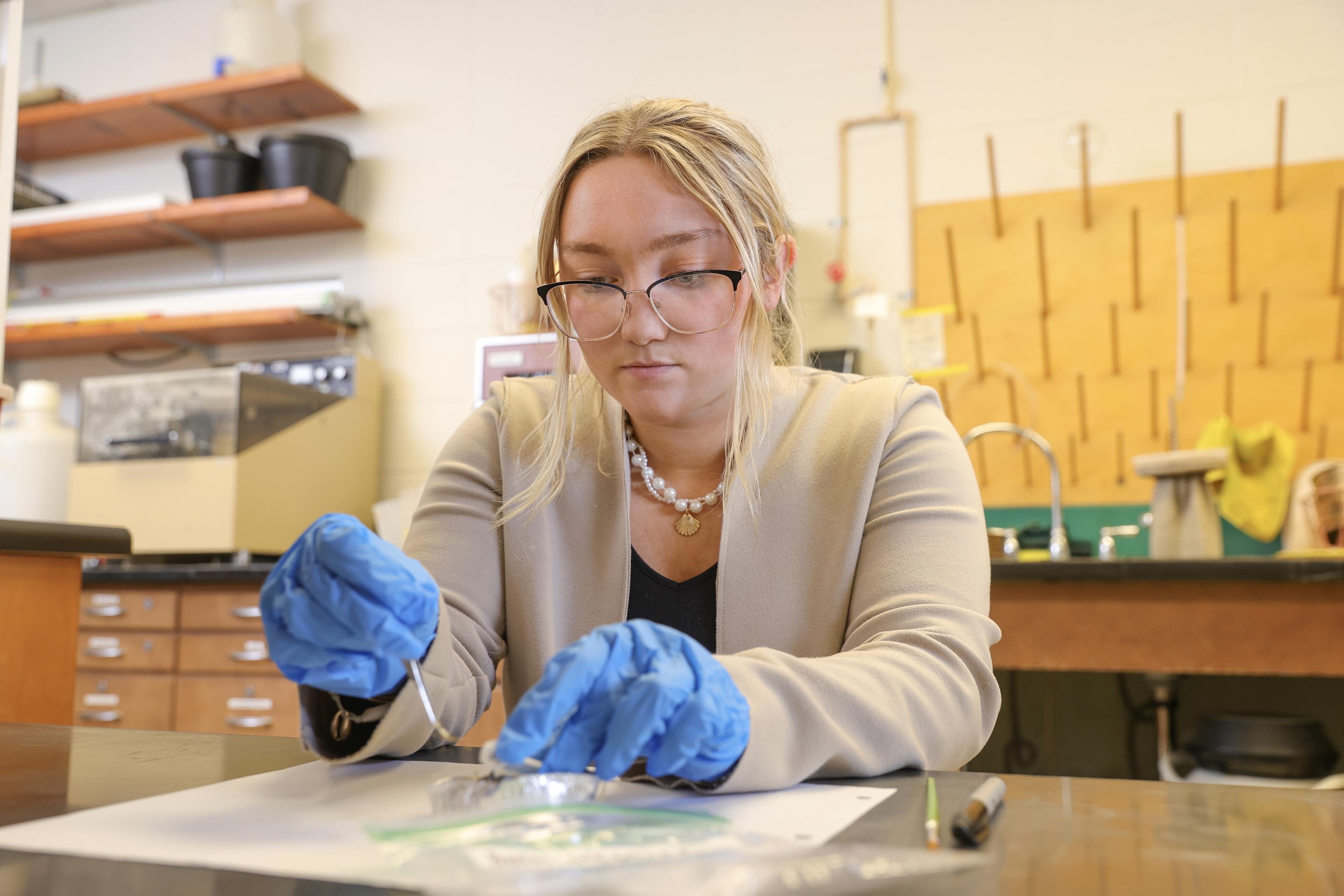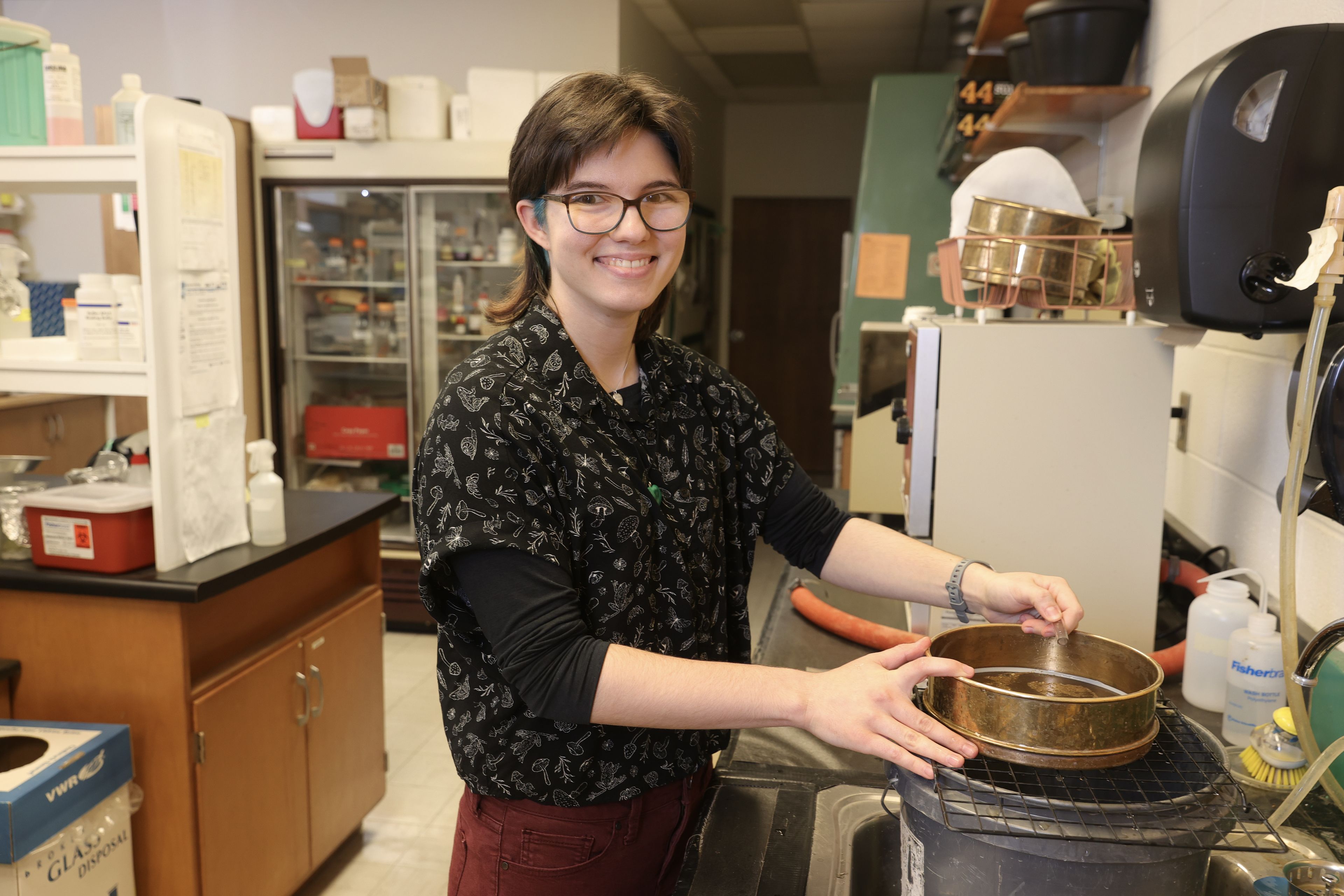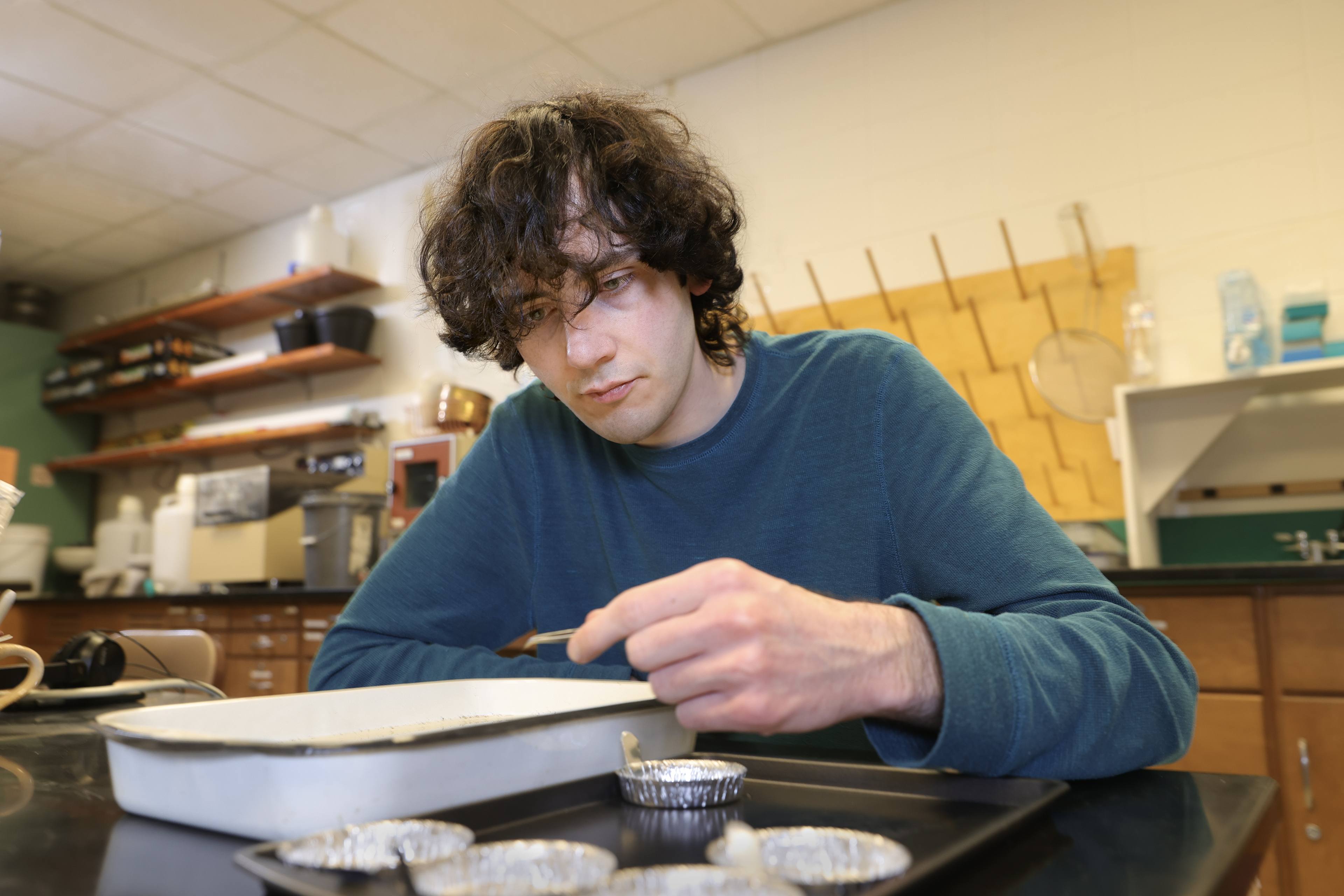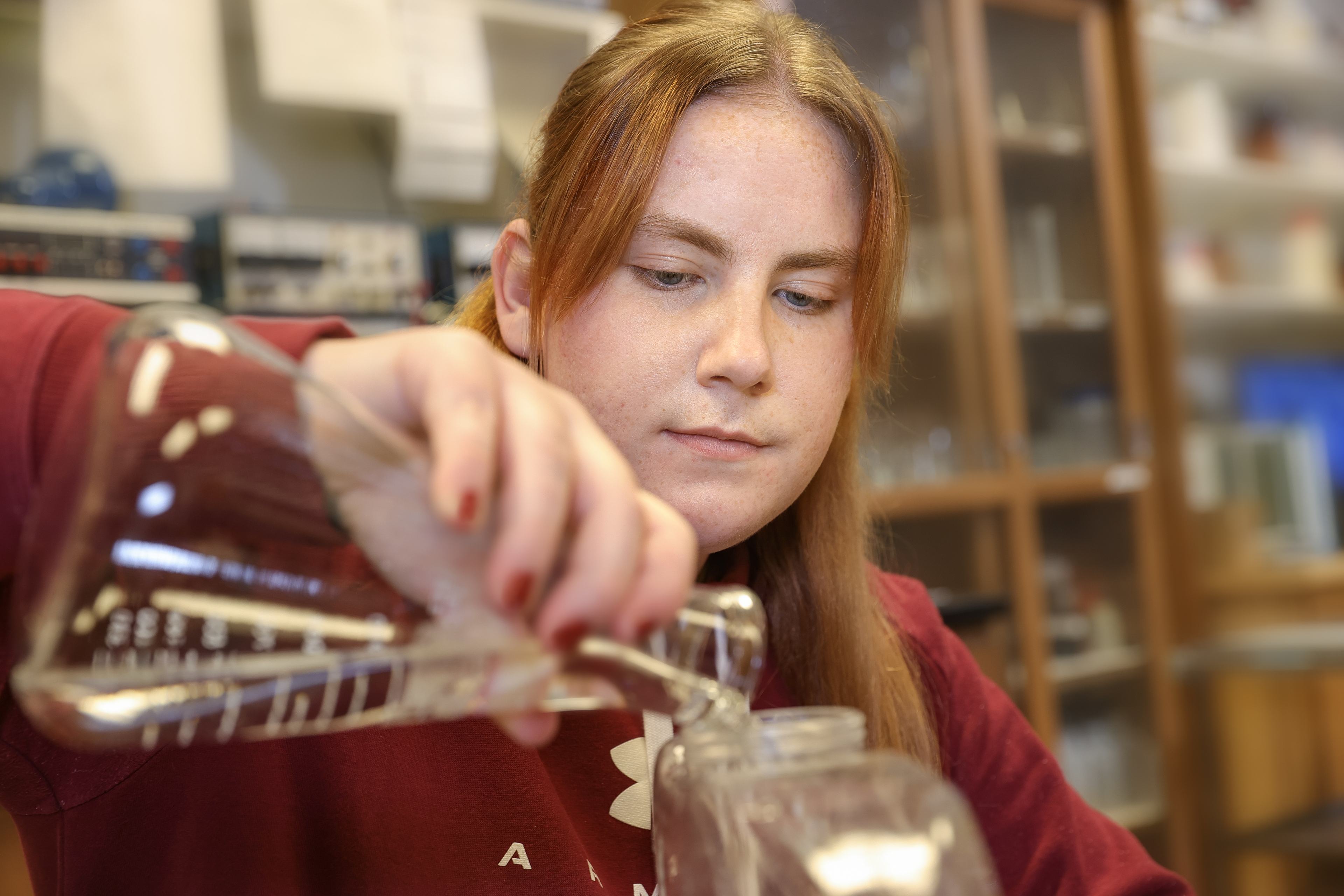
The real deal: BGSU undergraduate students earn vital research experience through H2Ohio
BGSU students go beyond the classroom to assist scientists in the field and see research first-hand
At Bowling Green State University, undergraduate students are not just learning about water quality — they are actively participating in Ohio’s statewide initiative to improve Lake Erie.
As part of Gov. Mike DeWine’s H2Ohio program, BGSU scientists are studying wetlands to learn how they mitigate agricultural runoff, where they are most effective and how long they remain effective.
BGSU researchers head three of the 11 research teams within the project, but participating in H2Ohio is not just limited to faculty or students who already have a bachelor’s degree. The research is an example of the work being done by a group of faculty and students at BGSU who focus on research related to the Great Lakes and Watershed Studies.

Undergraduate students from a variety of backgrounds are earning invaluable research experience as practicing scientists and are doing so on a project that actively aims to make BGSU’s home state a better place to live.
“I have always wanted to do research and conservation, and this has really pushed me to be a better scientist and think through processes,” said Alaina Evinger, a senior biology student from Hoytville, Ohio, who is working on the team helmed by BGSU faculty Dr. Kevin McCluney and Dr. Helen Michaels. McCluney is a member of the interdisciplinary Great Lakes and Watershed Studies research team.
“It’s pushed me very hard into conservation research, and it’s something I know I want to do in any field," Evinger said. "It’s given me the opportunity to broaden my horizons and given me a good background in different aspects of research.”
Undergraduate researchers identify plant species, collect field samples, conduct lab work, analyze data and generally do many of the same things as the faculty and staff scientists to assist with the massive effort to study wetlands that is expected to last at least a decade.

Emily Ritchie, a junior biochemistry student from Dayton who is the data manager for Dr. Robert Midden’s team, said student researchers come from many specializations. Just like their professional counterparts, students with backgrounds in geology, environmental sciences, biology, ecology, chemistry and other specializations can contribute to the project.
“It was really fascinating to see how each student’s background brought a new perspective and a new level of expertise to the project,” Ritchie said. “Science is a multidisciplinary field, so I think our research group’s varying backgrounds have been key to our success.”
While many science courses include labs that replicate research, actually being part of a large-scale, long-term research project with collaboration from nearly a dozen teams has been a formative experience for the BGSU students hoping to make research a career.
“This gets into the specifics where you really get to see how much detail goes into a scientific paper,” said Nicole Hildebrand, a senior from Dublin, Ohio, who is studying biology.
“It feels like we’re actual scientists now, not just students who are learning how to be a scientist one day. We’re doing actual science, which I think has been a really great experience.”
Lucy Busselle, a freshman chemistry student from Bowling Green, said working as part of the Midden team has shown a way to do public good within her field. While her degree will offer many private sector opportunities, working with H2Ohio gave her a way to apply the skills she learns in classes to a public-based initiative.
“When you look at jobs in chemistry, a lot of them are working for big corporations, which is fine, but you’re mostly contributing to one organization,” Busselle said. “When I found this lab and talked with people who worked there, it made me feel like I could be in chemistry and still make a positive difference in the world.”
Additionally, working on H2Ohio has allowed students to gain experience on something that is both close to home and impactful.

Researchers have dedicated significant efforts into improving the conditions on Lake Erie, which experienced a toxic algal bloom in 2014 that caused drinking water to become temporarily undrinkable.
By working on a project explicitly designed to learn about a critical issue affecting everyone who relies upon Lake Erie, students are gaining research experience while making a difference locally.
The McCluney and Michaels teams are currently seeking five undergraduate or recently graduated students to be research assistants for summer 2023. Interested students should send a resume and cover letter to both Lauren Brown (LNBrown@bgsu.edu) and Ewan Isherwood (Eisherw@bgsu.edu).
“I know and can explain to people exactly what we’re doing,” said Claire Crozier, a senior biology student from Fort Wayne, Indiana.
“It’s not just analyzing soil and water – we’re trying to change Lake Erie and make water quality better for everyone. That makes the research so much more meaningful. You go into research looking to make a difference, so that part of this project has been really cool to me.”
For many BGSU students involved with H2Ohio, the effort to improve Lake Erie conditions has been an everyday reminder of why they chose science-based majors in college.
“Being part of a statewide initiative brings the focus back as to why we research in the first place,” Ritchie said. “Scientists research with the goal to push society forward. We want to make where we’re living a better place for everyone.”
Related Stories
Media Contact | Michael Bratton | mbratto@bgsu.edu | 419-372-6349
Updated: 03/21/2023 01:29PM




